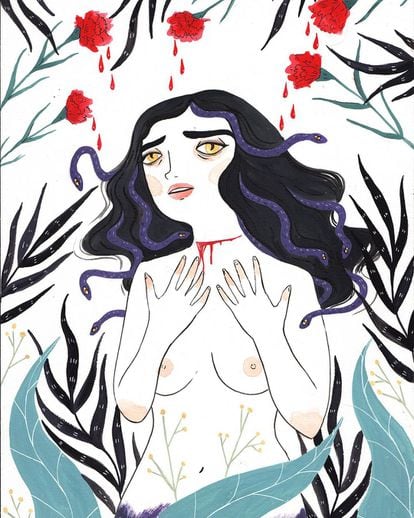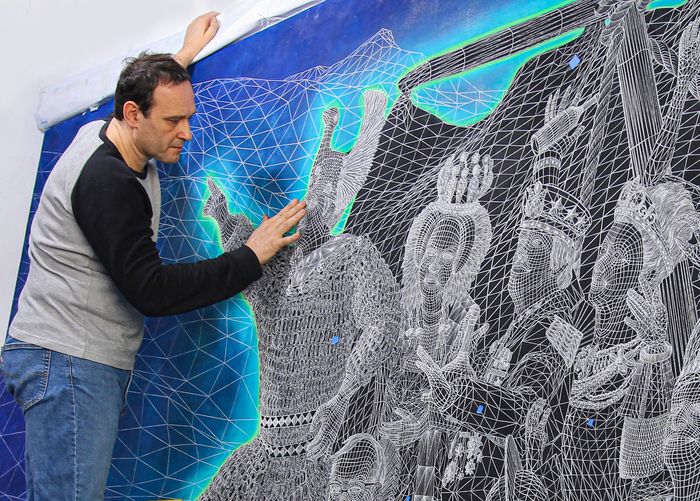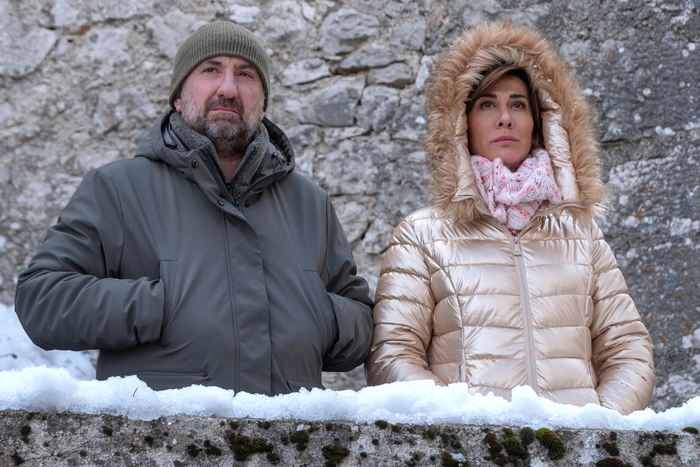María Hesse, photographed in Madrid on February 2. Álvaro García
Crazy, prostitutes, witches, manipulators.
In short: bad.
“That is the place that corresponds to us women, even as children, as soon as we step out of the line that they have drawn for us.
But who draws that line?” asks María Hesse in an interview with EL PAÍS in Madrid.
The writer and illustrator has just published
Malas mujeres
(Lumen), a work in which she re-reads literary, mythological and biblical figures that have traditionally been considered perverse for showing how femininity has been constructed in fictional stories.
The author also draws a parallel with real women, such as Juana de Castilla or Nevenka Fernández, to "give consistency to the book and show how these stories are transferred to real life."
More information
Peter Dinklage against the new Snow White: "Why go back to that retrograde story about seven dwarfs?"
María Hesse (Seville, 40 years old), author of various illustrated biographies of figures such as Frida Kahlo or Marilyn Monroe, says that as a child she loved reading and drawing stories.
She would spend hours watching the movie
Sleeping Beauty
and she would sing “You are the Prince Charming that I dreamed of” like a broken record.
Years later, when she became a stepmother, such a wicked figure in fairy tales, she was wary of taking on this role: "I sensed that if I said the word stepmother three times in front of the mirror, I would immediately become a witch."
But over the years she managed to break the spell and began to see things from a different perspective: "I understood that they were just stories and that I was not bad, but the stereotype had been reproduced so many times in my head that the lesson was recorded" .
Illustration of Medusa, priestess of Greek mythology. Maria Hesse
In the fairy fables that Hesse read as a child, both
Cinderella
as
rapunzel
and
Snow White
had stepmothers who took pleasure in teasing the stepdaughters.
According to German historian Eckhard Sander, the original story of
Snow White
is based on the true story of the 16th-century German Countess Margarita von Waldeck, who had an affair with Prince Philip of Spain and was poisoned by the court of Emperor Charles V. In the version rewritten by the Brothers Grimm, the villain was represented by a stepmother who, after poisoning the princess, is punished with burning metal shoes.
For Hesse, these stories leave a clear message for all the girls in the world: "Be careful with the women around you, because at the least they are going to risk it, even if you don't know why."
Already in the original story of
Sleeping Beauty
, written in 1634 by Giambattista Basile, the king finds a young woman apparently dead and cannot help but have sexual relations with her.
Months later the maiden, still asleep, has two children who, in search of milk, confuse the breast with the finger and suck the poisoned thorn that led her mother to lethargy, who finally wakes up from her deep sleep.
When he finds out about her, the king returns to look for her, inflaming her wife's wrath.
So, betrayed, the king's wife becomes the villain of the story and ends up dead, while the rapist lives happily ever after with the beautiful young woman.
"While repeated violations of men are forgiven, women are punished for the mere fact of existing," says Hesse.
Illustration of the singer Britney Spears.Maria Hesse
Bad Women
also dwells on the obscure myth of Medusa, who according to Ovid's account was a beautiful priestess who was forcibly taken by the god Poseidon on sacred ground.
Instead of punishing him, Atea unleashed all her fury against the victim, transforming her hair into snakes and making her gaze turn petrifying.
“With this conception in the background, it is understandable that many women do not dare to report a rape: if Medusa was too beautiful, if Ana came home drunk, if Marta wore a very short skirt, it is clear that they provoked it”, ironically the writer.
Pages later, Hesse recalls the real case of Nevenka Fernández, the Ponferrada councilor who denounced in 2001 the harassment she suffered at the hands of her boss, Mayor Ismael Álvarez.
It was the first time that a politician was tried in Spain for sexual harassment.
“All eyes, doubts and accusations were directed at her.
She achieved the judicial victory, but not the social one, and she was forced to emigrate to England.
While she was unable to find work, her stalker kept the support of many of her fellow citizens,” Hesse wrote.
The writer also highlights how biblical accounts point to women as the root of all evil.
According to the Old Testament, Lilith lived with Adam in Eden, but she was not happy because she did not accept hierarchies and, therefore, she left paradise.
Only after she left did God take a rib from Adam and create Eve.
The sacred scriptures say that the devil appeared before Eve in the form of a snake to make her eat her forbidden fruit;
Other writings affirm that it was actually Lilith, who had sworn revenge — "or perhaps she just wanted to open his eyes," adds the writer.
And just as Pandora's curiosity made her open the jar, Eva's temptation brought all evil to this world.
“We are the bearers of sin and the root of evil.
How then are they going to allow our religious ordination or the administration of the sacraments?
Our mortgage started the day Eva took the apple and doomed us forever.
It is an astute resource: with a stroke of the pen, women are left in a subordinate place, in life and in the Church”, points out the author.
Illustration of Pandora, a character from Greek mythology. Maria Hesse
The book also recalls how many women who managed to reach important leadership positions suffered repeated attacks to be delegitimized.
"Turning powerful women into depraved beings beyond reason has been an effective trick ever since Cleopatra—so capricious and sibylline that she was nicknamed 'the Serpent of the Nile'—began taking her so-called milk baths," Hesse writes.
Juana de Castilla, daughter of the Catholic Monarchs, was proclaimed queen of Castile in 1504 and queen of Navarre in 1516, but she hardly came to exercise power in her fifty years at the head of the crown.
Known as Juana la Loca, she spent much of her time locked up in Tordesillas, accused of being unable to govern.
“They said that she suffered from melancholy and behavioral disorders,
While the docile and passive princesses live happily ever after, the independent and bold villains always come to a tragic end, punished and expelled from paradise, Hesse opines.
Although there are contexts in which these stereotypes seem to be overcome, the author points out that there are still many realities in which these narratives are repeated, and declares: "Now we know that we should not be afraid to go beyond those capricious lines that others marked, and that those who opened those cracks looking for other horizons were not crazy, nor were they perverse, nor were they bad examples for others.
If anything they were brave, strong, determined women.
Breakers.
And if they call them bad women, let them call them;
the walls fell and we are no longer there to hear it”.















